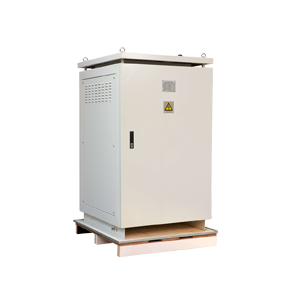Industry news
Understanding Neutral Grounding Resistors: Ensuring Electrical Safety and Stability
Understanding Neutral Grounding Resistors: Ensuring Electrical Safety and Stability
Introduction:
In any electrical power system, safety is of paramount importance. One crucial element that contributes to the safety and stability of the system is the Neutral Grounding Resistor (NGR). This unassuming device plays a significant role in safeguarding equipment, personnel, and the overall power distribution network. In this blog, we will delve into the concept of Neutral Grounding Resistors, exploring their purpose, benefits, and the role they play in maintaining a reliable electrical system.
Table of Contents:
- What is a Neutral Grounding Resistor?
- Why is Neutral Grounding Necessary?
- How Neutral Grounding Resistors Work
- Advantages of Neutral Grounding Resistors
- Types of Neutral Grounding Resistors
- Low Resistance NGR
- High Resistance NGR
- Arc Suppression Coil with NGR
- Selecting the Right NGR for Your Application
- Installation and Maintenance Best Practices
- NGRs and Electrical Safety: A Case Study
- Conclusion
1. What is a Neutral Grounding Resistor?
A Neutral Grounding Resistor (NGR) is a device used in electrical power systems to limit the fault current that may flow through the neutral point. It is a resistor connected between the neutral point of a transformer or generator and ground. The primary function of an NGR is to stabilize the system voltage during ground faults and to protect equipment and personnel from the harmful effects of fault currents.

2. Why is Neutral Grounding Necessary?
Grounding is essential to maintain a reference point (ground potential) for the electrical system. Without proper grounding, fault currents could lead to dangerous conditions such as electrical shocks, fires, and damage to equipment. Neutral grounding is especially critical in medium and high voltage systems, where fault currents can be substantial.
3. How Neutral Grounding Resistors Work
During normal operation, the NGR has a negligible effect on the system, allowing a small amount of current to flow through it. However, when a ground fault occurs, the NGR limits the fault current to a safe level, preventing it from reaching excessive magnitudes. This controlled fault current helps in promptly detecting and isolating the faulty section of the system, reducing potential damage and hazards.
4. Advantages of Neutral Grounding Resistors
Enhanced Equipment Protection: NGRs protect electrical equipment from the destructive effects of fault currents, extending their lifespan and reducing downtime.
Improved Safety: By limiting fault currents, NGRs minimize the risk of electrical shocks to personnel, making the working environment safer.
Stabilized System Voltage: NGRs help maintain system voltage stability during ground faults, preventing voltage sags and other voltage-related issues.
Fault Localization: The controlled fault current facilitates quicker fault detection and localization, aiding in faster system restoration.
5. Types of Neutral Grounding Resistors
There are different types of NGRs available, and the selection depends on the specific requirements of the power system. The main types include:
Low Resistance NGR: These NGRs have low resistance values and are suitable for systems that require high fault currents for fault detection and relay operation.
High Resistance NGR: High resistance NGRs are employed in systems where low fault currents are sufficient for protective relaying, such as in low-voltage systems.
Arc Suppression Coil with NGR: This combination provides faster fault clearance by utilizing both NGRs and arc suppression coils.
Categories
Latest News
Contact Us
Contact: Tom Tan
Phone: (86)-15602914508
Tel: (86)-755-28158718
Email: [email protected]
Add: 1st Floor, GUOYAO Industry Park, HUANGJIANG Town, DONGGUAN, GUANGDONG, China
 Sales Team
Sales Team